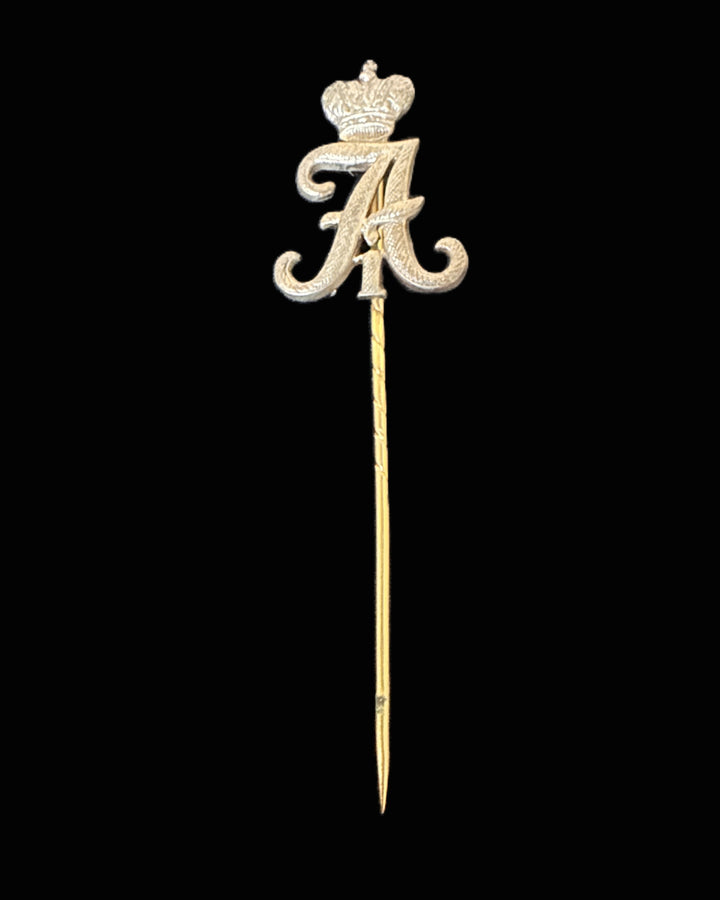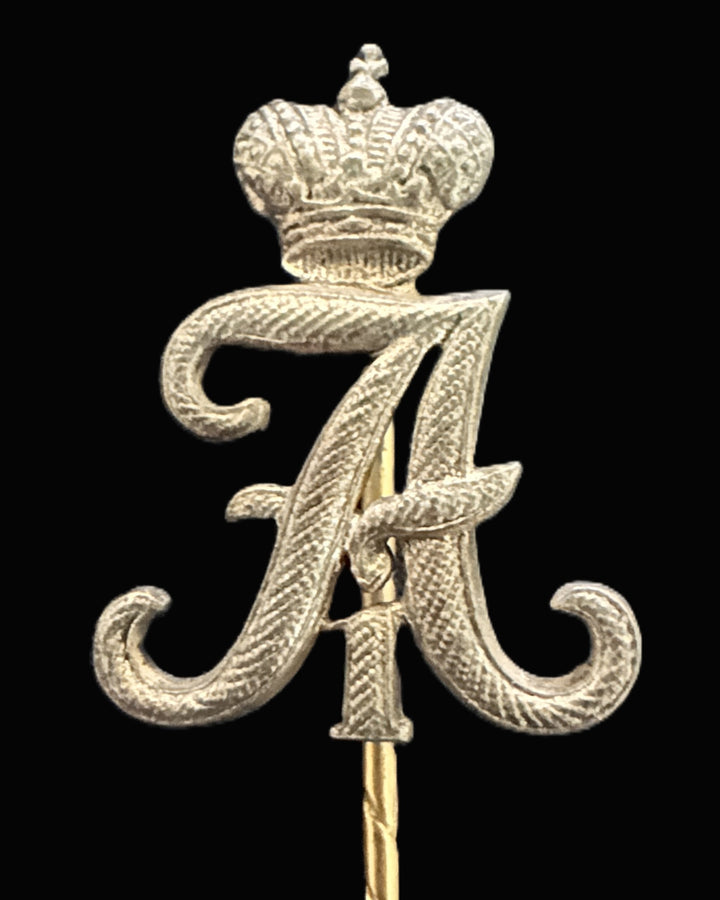Prussian Royal Cypher Stickpin for Empress Augusta, Consort of Kaiser Wilhelm I
- Regular price
- $135.00
- Sale price
- $135.00
- Regular price
SKU: 28-30
This superb late-nineteenth-century Prussian stickpin displays the crowned monogram “A I,” denoting Augusta von Sachsen-Weimar-Eisenach (1811–1890), consort of King Wilhelm I of Prussia and first German Emperor. Executed in finely chased silver over a gilt-toned twisted shaft, the crowned cipher measures approximately 14 mm high, surmounted by the domed Prussian crown whose jeweled arches and cross finial remain crisply defined. The monogram’s textured field captures light across the flowing serifs of the letter A, while the smaller capital I denotes Augusta Imperatrix, the Empress in whose name countless charitable works and regimental dedications were conducted during the rise of the German Empire.
Empress Augusta was among the most influential royal women of nineteenth-century Europe. Educated at Weimar and steeped in the liberal intellectual climate of Goethe’s circle, she brought refinement and philanthropy to the Prussian court. As consort she championed medical relief organizations, the Red Cross, and educational reform—efforts that earned her genuine affection among officers and soldiers. Tokens bearing her cipher, such as this elegant stickpin, were privately commissioned and presented to courtiers, members of the Imperial household, and senior officers who had served the royal family. They were worn discreetly in civilian attire, conveying loyalty to the crown during a period when Prussia was transforming itself into a continental empire.
The craftsmanship reflects jeweler-grade production typical of Berlin or Potsdam around the unification era (1871). The twist-stem pin is unmarked but clearly of German origin, with the crown’s ornamentation mirroring official devices seen on state orders and medals of the time. Its survival in such condition—without bend or loss to the relief—suggests it was preserved as a memento rather than worn daily.
Pieces bearing Augusta’s cipher are significantly scarcer than those of her successor, Empress Augusta Viktoria. By the 1890s they had largely disappeared from wear, replaced by the new imperial monogram of Wilhelm II’s court. Surviving examples today are prized not only for their aesthetic refinement but also for their direct association with the founding generation of Imperial Germany.
This particular example measures approximately 63 mm overall. The patina is soft and even; minor age toning adds depth to the silvered crown and lettering. The reverse retains its original polish, and the pin remains straight and firmly mounted. It presents beautifully in any display of royal insignia or personal adornments connected with the Hohenzollern dynasty.
Beyond its immediate visual appeal, the piece tells the story of an empire in transition—from the disciplined austerity of Frederick William IV’s court to the confident grandeur of Bismarck’s new Reich. Augusta’s monogram, crowned and interlaced, symbolizes both continuity and change: the enduring authority of the Prussian monarchy and the emergence of a modern imperial identity that would define Germany until 1918.
Collectors of Imperial regalia will recognize in this delicate jewel the refined sensibility of the Wilhelmine age’s forerunner. Whether displayed alongside decorations of the founding Kaiser or within a cabinet of nineteenth-century court pieces, it remains a tangible link to the woman whose grace softened the steel of Prussia’s first emperor.





